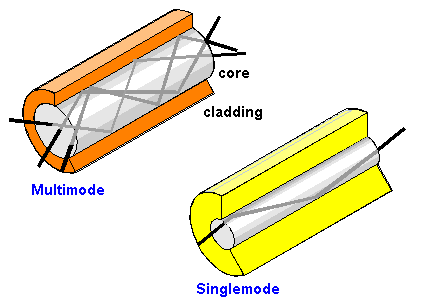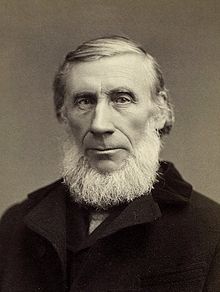Fiber-optic communication is a method of transmitting information from one place to another by sending pulses of light through an optical fiber. The light forms an electromagnetic carrier wave that is modulated to carry information.
Optical fiber can be used as a medium for telecommunication and computer networking because it is flexible and can be bundled as cables. It is especially advantageous for long-distance communications, because light propagates through the fiber with little attenuation compared to electrical cables.
For short distance applications, such as a network in an office building, fiber-optic cabling can save space in cable ducts. This is because a single fiber can carry much more data than electrical cables such as standard category 5 Ethernet cabling, which typically runs at 1 Gbit/s. Fiber is also immune to electrical interference because there is no cross-talk between signals in different cables, and no pickup of environmental noise.
Non-armored fiber cables do not conduct electricity, which makes fiber a good solution for protecting communications equipment in high voltage environments, such as power generation facilities, or metal communication structures prone to lightning strikes. They can also be used in environments where explosive fumes are present, without danger of ignition. Wiretapping is more difficult compared to electrical connections, and there are concentric dual core fibers that are said to be tap-proof.
Advantages over electrical transmission
- Immunity to electromagnetic interference, including nuclear electromagnetic pulses
- High electrical resistance, making it safe to use near high-voltage equipment or between areas with different earth potentials.
- Lighter weight. Important, for example, in aircraft.
- No sparks. Important in flammable or explosive gas environments.
- Not electromagnetically radiating, and difficult to tap without disrupting the signal. Important in high-security environments.
- Much smaller cable size. Important where pathway is limited, such as networking an existing building, where smaller channels can be drilled and space can be saved in existing cable ducts and trays.
Sources : http://www.ntt.co.jp/news/news06e/0609/060929a.html
http://www.toddulmer.com/work/lee_ulmerCLEO2006.pdf
 Medical
Medical Military
Military Television
Television Telecommunications
Telecommunications Networking
Networking Medical
Medical Military
Military Television
Television Telecommunications
Telecommunications Networking
Networking


 The first all-optic fiber cable, TPC-5, that uses optical amplifiers was laid across the Pacific Ocean in 1996.
The first all-optic fiber cable, TPC-5, that uses optical amplifiers was laid across the Pacific Ocean in 1996.
